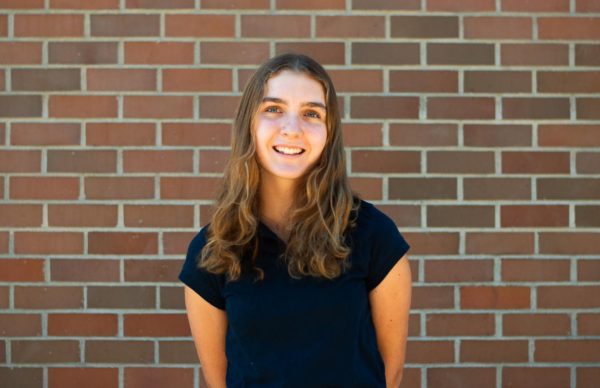I walked into “Anatomy of a Fall” ready for a David-Fincher-esque thriller; one that ends with a big, satisfying twist. Spoiler: I didn’t leave satisfied. But I left amazed.
“Anatomy of a Fall,” written and directed by Justine Triet, is a French film about the trial for the murder of Samuel Maleski, played by Samuel Theis.
The film opens with Sandra, played by Sandra Hüller, and her blind son, Daniel, played by Milo Machado-Graner, going through their ordinary daily tasks. As a writer, Sandra is being interviewed by a literature student and Daniel is taking his dog for a walk. When he returns, he finds his father, Samuel, dead, lying on the snow in their front yard.
Based on where the father was found, there are two logical explanations for his death: Either he attempted suicide and jumped out of his window, or someone pushed him. The only person without a proper alibi is Sandra, so she gets put on trial for her husband’s murder. The majority of the film takes place in the courtroom, listening to numerous witnesses testify and saved audio recordings.
But make no mistake, this is not a murder mystery or a big whodunit. This is a marriage drama. The evidence brought on trial is not the typical murder weapon and fingerprints. Instead, lawyers try to navigate the problems in Sandra and Samuel’s marriage through recordings, book quotes and song lyrics, hoping to find a clear motive for Sandra to murder her husband.
When the film begins, we are clueless about the nature of their relationship, and every bit of evidence gives us more information about the ups and downs of their marriage.
Triet skillfully decides what she’ll show us and what she doesn’t. For example, when an audio recording of a fight between Sandra and Samuel is presented as evidence, the verbal altercation is shown to the audience as the real in-person fight. But once the spoken fight ends and the physical fighting begins, Triet brings us back to the courtroom, where we can only hear, not see, the blows, making it unclear who started the fight or who hit who.
Through this technique, Triet shows us that you never really know who’s at fault in a relationship. From the perspective of Sandra’s witnesses, she’s always in the right, but from the perspective of Samuel’s witness, Sandra is the villain.
Because a trial centers around ambiguity, Triet forces us to stand in the dark, and by doing so, she highlights the two-sided nature of relationships. Every new piece of evidence presented depicts the wrongdoing of either Sandra or Samuel. They are both in the wrong, and they are both at fault for their failed marriage.
Moreover, while we, as the audience, are metaphorically blind, stuck in the courtroom largely unaware, Daniel is actually blind. Just like us, Sandra and Samuel’s son doesn’t see their problems face to face, but through the bits of nonvisual information he perceives.
Triet ultimately forces us to be in Daniel’s shoes. We, as an audience, become kids wondering what went wrong in our parents’, Sandra and Samuel, marriage, blindsided by their failures.
Machado-Graner highlights Triet’s goal, bringing this angry yet curious mindset to life with his performance as Daniel.
Hüller’s performance similarly enhances the ambiguity of Sandra. She makes herself nervous and warm when she’s on trial to seem like an innocent, grieving wife, yet when we see her fights with Samuel, she becomes terrifying, a villain.
These two performances help navigate the themes of the film and the complexity of Sandra and Samuel’s marriage.
“Anatomy of a Fall” is an honest and realistic marriage drama, where information is granted throughout the film instead of at the beginning. Do not watch this film if you are looking for a thriller; there’s not going to be some massive twist like “Knives Out” or “Clue.” Watch this movie if you are looking for a well-made creative take on the family drama.
–
Cinematic is a movie review column currently publishing a series on each of the 2024 best picture nominees. To access more reviews, click the “Cinematic” tag below.



